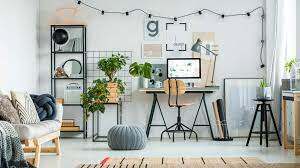Email format error
Email cannot be empty
Email already exists
6-20 characters(letters plus numbers only)
The password is inconsistent
Email format error
Email cannot be empty
Email does not exist
6-20 characters(letters plus numbers only)
The password is inconsistent



Your office space is more than just a place to work; it's an environment where productivity, creativity, and comfort should coexist harmoniously. Selecting the right office furniture is a crucial part of creating a workspace that is both practical and visually appealing. In this blog, we'll explore the art of choosing office furniture wisely, balancing practicality with aesthetics to craft an office that works for you.
Start with Functionality
Functionality is the foundation of office furniture. Before considering aesthetics, think about your specific work needs and how the furniture will support them:
Ergonomics: Invest in ergonomic office chairs and adjustable desks that promote good posture and reduce the risk of strain or discomfort.
Storage Solutions: Consider storage needs, including file cabinets, shelves, and credenzas. Organized storage contributes to a clutter-free workspace.
Technology Integration: Ensure that your furniture accommodates the technology you use. Cable management systems can keep cords and wires tidy.
Task-specific Furniture: Choose furniture based on your specific tasks. For example, a standing desk may be ideal for those who switch between sitting and standing throughout the day.
Aesthetic Harmony
Once you've assessed your functional needs, it's time to consider aesthetics. Office furniture should blend seamlessly with your office's overall design:
Consistent Style: Choose furniture that complements the overall style of your office. A modern desk may not suit a traditional office, and vice versa.
Color Palette: Stick to a cohesive color palette that resonates with your brand or personal style. Neutral colors like white, gray, and wood tones offer a timeless and versatile backdrop.
Branded Furniture: Consider custom or branded furniture to reinforce your company's identity. This can include branded chairs, desks, or reception area furniture.
Space Efficiency
Optimizing your office layout for efficiency is essential, especially if you have limited space. Consider these space-saving solutions:
Modular Furniture: Modular office furniture can be customized and reconfigured to suit your changing needs.
Compact Desks: Choose compact desks or workstations that provide ample workspace without overcrowding the room.
Vertical Storage: Utilize vertical space with tall bookshelves and cabinets. This minimizes the footprint of your furniture.
Durability and Quality
Invest in quality office furniture that will stand the test of time. Quality pieces may have a higher upfront cost but can save you money in the long run by reducing the need for frequent replacements. Durable materials and construction are crucial for longevity.
Employee Well-being
Consider the well-being of your employees when selecting office furniture:
Comfort: Ensure that seating and work surfaces are comfortable and conducive to productivity.
Lighting: Proper lighting is essential. Natural light and well-placed task lighting can enhance employee comfort and performance.
Privacy and Collaboration: Offer a balance between private workspaces and areas designed for collaboration and interaction.
Sustainability and Eco-friendliness
Consider eco-friendly options for your office furniture:
Sustainable Materials: Choose furniture made from sustainably sourced materials to minimize environmental impact.
Recyclable and Reusable: Opt for furniture that can be recycled or repurposed at the end of its life cycle.
Energy Efficiency: Use LED lighting and energy-efficient technologies to reduce your office's energy consumption.
Flexibility and Adaptability
Office furniture should adapt to the changing needs of your business. Look for furniture that can be reconfigured or expanded to accommodate growth or shifting priorities.
Budget Considerations
Stay within your budget by prioritizing the most essential pieces of furniture first. Over time, you can invest in additional pieces as your needs and budget allow.
Conclusion
Selecting office furniture wisely is about finding the perfect balance between functionality and aesthetics. Practical and visually appealing furniture can enhance productivity, comfort, and the overall atmosphere of your workspace. By considering your specific needs, creating a harmonious aesthetic, and investing in quality, sustainable, and adaptable furniture, you can design an office that reflects your style and values while supporting your business goals. A well-designed office promotes efficiency, fosters creativity, and contributes to a positive work environment.